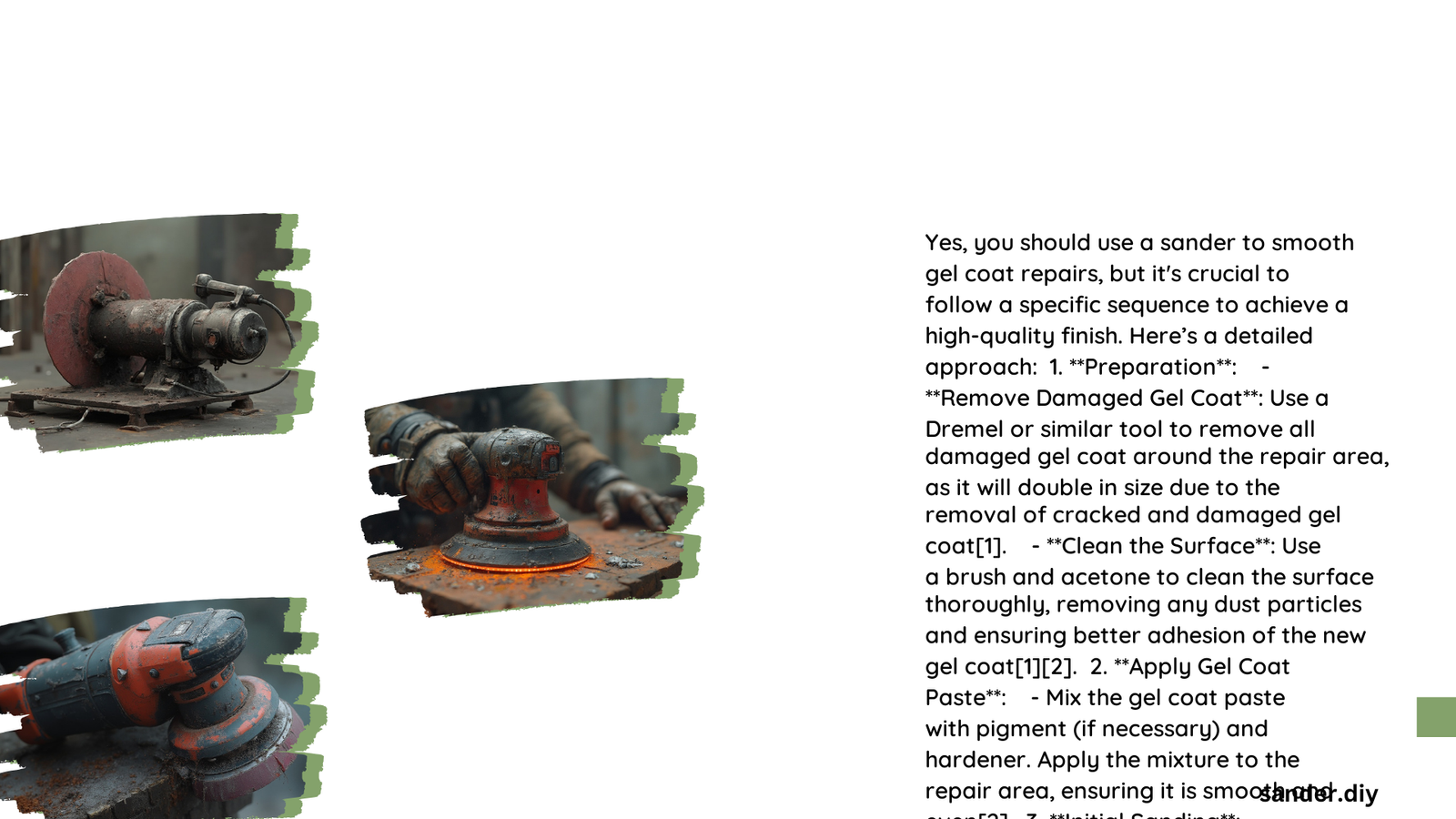Using a sander for gel coat repair can be an effective method to achieve a smooth finish, but it comes with both advantages and risks. Sanding helps blend repaired areas, enhances adhesion for new materials, and removes imperfections. However, it can potentially damage the gel coat if not done carefully. This article explores the pros and cons of using a sander for gel coat repair and provides guidance on proper techniques and tools.
What Are the Advantages of Using a Sander for Gel Coat Repair?
Using a sander for gel coat repair offers several benefits:
- Smooth Finish: Sanding is crucial for achieving a polished, even surface on repaired gel coat areas.
- Enhanced Adhesion: Roughening the surface with a sander improves the bonding of new gel coat or repair materials.
- Imperfection Removal: Sanding effectively eliminates minor scratches, chips, and other surface flaws.
- Blending: It helps blend the repaired area seamlessly with the surrounding gel coat.
What Are the Risks of Using a Sander on Gel Coat?

While sanding can be beneficial, it’s important to be aware of potential risks:
- Gel Coat Damage: Aggressive sanding can thin or damage the gel coat, potentially exposing the underlying fiberglass.
- Color Changes: Excessive sanding may cause discoloration, especially if the substrate doesn’t match the gel coat color.
- Uneven Surfaces: Improper technique can create uneven areas or swirl marks, requiring additional work to correct.
- Time-Consuming: Achieving a perfect finish often requires multiple passes with progressively finer grits, which can be time-intensive.
What Type of Sander Is Best for Gel Coat Repair?
For gel coat repair, a Dual-Action (DA) Orbital Sander is generally recommended. Here’s why:
- Provides efficient smoothing without creating swirl marks
- Offers better control and reduces the risk of damaging the gel coat
- Popular brands include Mirka, 3M, and Sunmight
| Brand | Features | User Feedback |
|---|---|---|
| Mirka | High-quality, durable, various power ratings | Preferred by professionals for performance |
| 3M | Easy to use, effective for smoothing | Well-regarded for gel coat work |
| Sunmight | Good balance of quality and affordability | Popular among DIY enthusiasts |
How Should I Use a Sander for Gel Coat Repair?
Follow these steps for effective gel coat sanding:
- Prepare the Area:
- Clean thoroughly to remove dirt, grime, and wax
-
Mask off surrounding areas to protect from accidental damage
-
Initial Sanding:
- Use 120-150 grit sandpaper
-
Remove loose gel coat and rough edges
-
Intermediate Smoothing:
- Progress to 220-320 grit
-
Blend repaired area with surrounding surface
-
Final Finishing:
- Use 400-600 grit or higher
-
Consider wet-sanding for a smoother finish
-
Post-Sanding Steps:
- Apply rubbing compound
- Polish and wax for protection and shine
What Grit Sandpaper Should I Use for Gel Coat?
Choosing the right grit is crucial for effective gel coat repair:
- Coarse (120-150 grit): For initial roughening and removal of damaged gel coat
- Medium (220-320 grit): Smoothing and blending repaired areas
- Fine (400-600 grit): Achieving a smooth surface ready for polishing
- Ultra-Fine (800-1200 grit): Final wet-sanding for a high-gloss finish
Progress from coarser to finer grits to achieve the best results.
What Precautions Should I Take When Sanding Gel Coat?
To ensure safe and effective sanding:
- Work in a well-ventilated area and wear protective gear (mask, goggles, gloves)
- Use light pressure to avoid over-sanding
- Keep the sander moving to prevent heat buildup
- Regularly check your progress to avoid damaging the gel coat
- Clean the surface between grit changes to prevent cross-contamination
How Can I Achieve the Best Finish After Sanding?
For a professional-looking finish:
- Compound: Use a marine-grade rubbing compound to remove fine scratches
- Polish: Apply a high-quality marine polish to enhance shine
- Wax: Finish with a marine wax for protection and lasting gloss
- Buff: Use a buffer for larger areas to achieve a mirror-like finish
Remember, patience and attention to detail are key to achieving a flawless gel coat repair.
